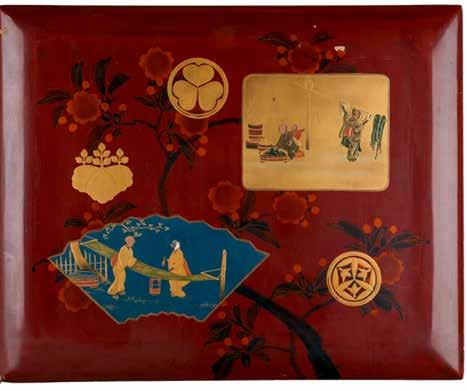Director’s foreword
Rhana Devenport, ONZM
The Art Gallery of South Australia’s collection of art from Japan has developed steadily for over a century, primarily through the generosity and connoisseurship of patrons. In the early twentieth century a series of significant bequests dramatically expanded our Asian decorative arts collection, while the first pair of matched swords were acquired in 1951. Today the collection has been strengthened through strategic acquisitions such as the magnificent Samurai armour, with breastplate depicting Fudōmyōō, which is featured in the exhibition and which was acquired in 2016 through the generosity of the Art Gallery of South Australia Foundation Collectors Club. This online publication, Samurai transformed, examines the influence of the samurai classes on the art and culture of Japan, from their ascension in the twelfth century to the present day. Through a series of essays by scholars from Australia, the United States and Japan, seeks to explore the complexity of the samurai, including their philosophical motivations and aesthetics, which continues to both fascinate and delight artists and audiences. For over 600 years the samurai class ruled the archipelago of Japan and during that time transformed the socio-political and artistic landscapes. As warriors, their disastrous conflicts and heroic deeds provided a wealth of the material for the great military epics of Japanese literature and works of art. As patrons of the arts, they fostered a cultural renaissance, which still today underpins and defines the most recognisable forms of Japanese art and culture. As a class, their idealised code of ethics and their cultural pursuits continue to resonate with a global community. As symbolic personae, they were essential in presenting Japan to the world and are now a distinctive and fertile fixture in global culture. This publication is presented in conjunction with the exhibition Samurai, shown at the Art Gallery of South Australia from 24 July 2020. Samurai includes significant works of art from the Gallery’s Japanese collection, as well as those from private collections across Australia. In particular I wish to thank the Gwinnett Family for their tremendous generosity, alongside Joan and Colin Beer, M.J.M. Carter, AO, Brian and Barbara Crisp, David Forrest and Jánis Nedéla, Frances Gerard, John and Geraldine Halls, Mrs J. Howard Johnson, Elizabeth and Tom Hunter, Shane Le Plastrier, R.H. Longden Bequest, Alan Myers and Lee Grafton, James and Diana Ramsay, Mr E. Roberts, Raphy Star, Mrs Alec Tweedie Bequest, Ed and Sue Twedell, and Sir Samuel Way. The exhibition portrays 4

















